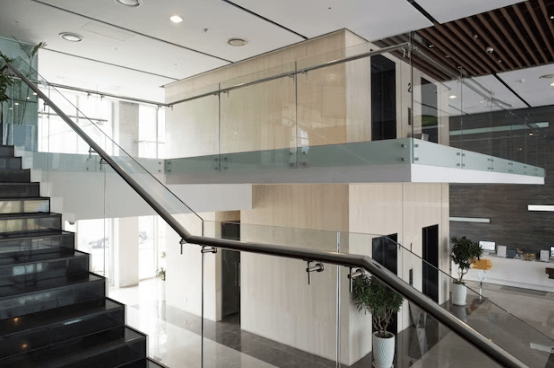
In today’s world, architectural design and interior planning have transcended beyond just aesthetics. They have morphed into significant elements shaping our interactions, productivity, and overall well-being. One such design aspect is the use of glass partitions. These elements are not merely functional dividers but play a pivotal role in striking a balance between openness and privacy.
Unveiling Connectivity: How Glass Partitions Foster Collaborative Environments
Glass partitions have rapidly gained popularity in the modern workspace environment. They are increasingly seen as a means of fostering a more collaborative and interconnected atmosphere while preserving the essential need for individual space. The transparency of glass partitions allows for a seamless integration of spaces, promoting a sense of unity and collaboration among individuals.
Visual connectivity is a key component in creating a collaborative environment. Glass partitions allow for an unobstructed view across spaces, making people feel more connected and involved. This visual interplay can foster a sense of collective identity, promoting teamwork and a shared sense of purpose.
Moreover, glass partitions can also enhance the spatial experience. They can make a space feel larger and more open, contributing to an environment conducive for creativity and innovation. The use of glass partitions can thus be seen as a strategic design choice aimed at enhancing productivity through a more collaborative and dynamic spatial environment.
The Subtle Divide: Achieving Privacy without Sacrificing the Open Feel with Glass Partitions
While the openness fostered by glass partitions aids in collaboration, it is equally crucial to preserve the need for privacy. Glass partitions are an excellent solution for achieving this delicate balance. They provide a subtle divide, ensuring privacy without compromising the open feel of the space.
One of the most significant advantages of glass partitions is that they provide privacy while still allowing for light penetration. This can create a more positive and inviting atmosphere compared to traditional solid partitions. The transparency of glass partitions can also reduce feelings of isolation, making people feel more comfortable and less confined.
However, achieving the right balance between openness and privacy with glass partitions requires thoughtful design. Factors such as the placement of partitions, the choice of glass type, and the use of additional elements like roller blinds automatic or curtains can significantly influence the degree of privacy. With the right design approach, glass partitions can create a harmonious balance between privacy and openness, contributing to a more satisfying and efficient workspace.
Visual Accessibility: Balancing Transparency and Seclusion through Thoughtful Glass Partition Placement
While the transparency of glass partitions can foster collaboration and openness, it can also potentially lead to a lack of privacy. This is where thoughtful placement of glass partitions comes into play. The placement of partitions can significantly influence the balance between transparency and seclusion, impacting the overall spatial experience.
When designing spaces with glass partitions, it’s essential to consider the activities and functions that will occur in each space. For instance, meeting rooms or spaces requiring a high degree of confidentiality might benefit from glass partitions with integrated blinds or curtains. This can provide the necessary privacy when needed while still allowing for visual connectivity when appropriate.
The orientation of the glass partitions can also play a crucial role in determining the level of privacy. For example, positioning glass partitions in a way that they reflect natural light can create a sense of privacy while still maintaining a sense of openness. Similarly, the use of frosted or tinted glass partitions can provide an additional layer of privacy without completely blocking visual access.
Empowering Choice: Giving Users Control over Openness and Privacy with Adjustable Glass Partitions
While fixed glass partitions can create a balance between openness and privacy, adjustable glass partitions can take this balance to a new level. Adjustable glass partitions provide the users with the flexibility to control the degree of openness or privacy as per their needs.
With adjustable glass partitions, spaces can be transformed at a moment’s notice. Whether it’s conducting a confidential meeting or fostering an open brainstorming session, adjustable partitions can accommodate various needs and scenarios. This adaptability can enhance productivity and efficiency by providing an environment that can be tailored to specific tasks or activities.
The use of adjustable glass partitions can also empower users by giving them control over their environment. By allowing individuals to control the degree of openness or privacy, adjustable partitions can contribute to a more personalized and satisfying workspace. This can enhance well-being and productivity, leading to a more successful and effective workspace.
In conclusion, glass partitions are an essential tool in modern design, capable of creating a balance between openness and privacy. Through strategic placement and the use of adjustable partitions, spaces can be designed to foster collaboration and productivity while still preserving the much-needed privacy. Whether it’s a workspace or a residential setting, glass partitions can significantly enhance the spatial experience, contributing to well-being and efficiency.
As we move towards an increasingly interconnected world, the role of design in shaping our interactions and experiences will only become more significant. By leveraging the potential of elements such as glass partitions, we can create spaces that are not only visually appealing but also supportive of our evolving lifestyle and work needs.



